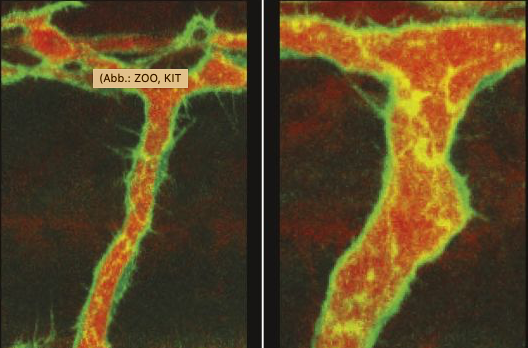
In the event of a heart attack or a stroke, blood supply must be safeguarded as quickly as possible in order to prevent extensive physical damage. Scientists at the Karlsruhe Institute of Technology (KIT) in Germany are focusing on a new mechanism to increase the size of endothelial cells. This should improve blood flow within a few hours. Dutch researchers also took part in this research.
“We are seeking a completely new approach,” emphasizes Professor Ferdinand le Noble, head of the Department of Cell and Developmental Biology at the Institute of Zoology (ZOO) at KIT. “Our focus is not on increasing the number of blood vessels. We want to widen the existing blood vessels so that they allow more blood to pass through.”
Even small changes in vascular diameter have a tremendous influence on blood flow. Natural processes are made use of here. These enable small arteries to grow into larger ones over the course of their development. Usually, this development is triggered by natural physical processes, i.e. by blood flow which takes a relatively long time. Typically, it takes a few days before new blood vessels have grown back after a blockage or a blood vessel has closed off. “A cardiologist does not have that time when they have to treat an acute cardiac arrest,” le Noble explains.
Local Vasodilation
Basically, there are two mechanisms that can make internal tubular blood vessels widen more quickly. This can be done by increased production of endothelial cells, but also by widening already existing endothelial cells. The mechanisms must be independent of the blood flow in order to be able to widen blood vessels after a blockage.
The VEGF protein is known as an important protein in the design and formation of the vascular system. Targeted vasodilation (widening of the blood vessels) requires that VEGF only acts where it is needed.
The ZOO experts have revealed a mechanism that allows a proper amount of VEGF to be dosed locally. VEGF gives the signal for the targeted propagation of the number of endothelial cells and for rebuilding the endothelial cytoskeleton. This causes the artery diameter to widen. This remodeling of the cytoskeleton is decisive because an increase in the size of endothelial cells must be accompanied by a corresponding change in the stability of these cells.
Improved treatment of cardiovascular diseases
The Trio protein is used to make sure that the blood vessels not only expand rapidly but also steadily without causing any damage or protrusions. As the ‘master regulator,’ it is used to ensure that the rebuilding of the endothelial skeleton takes place in the proper places.
“We hope that our research will help to improve the treatment of acute cardiovascular disease in the long-term,” le Noble emphasizes. The new mechanism, which has been successfully demonstrated in zebrafish embryos and endothelial cell models, will now be subjected to further preclinical testing.
In the near future, results of the ZOO research could be used for the development of drugs that selectively stimulate growth processes in arterioles using VEGF and activate and deactivate the Trio protein.
Alongside KIT, the German Center for Cardiovascular Research (DZHK) and research colleagues from the Netherlands and Finland were also involved in the four-year study.
The study was published last week in Nature Communications.
Also interesting: ‘Curing sick blood vessels with new stent can save lives’








